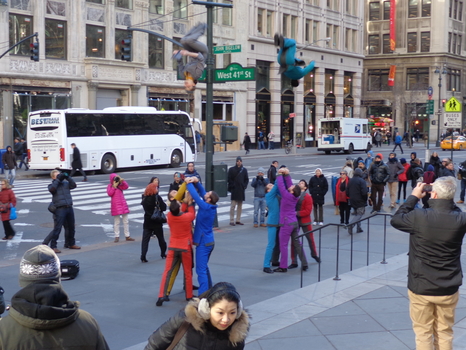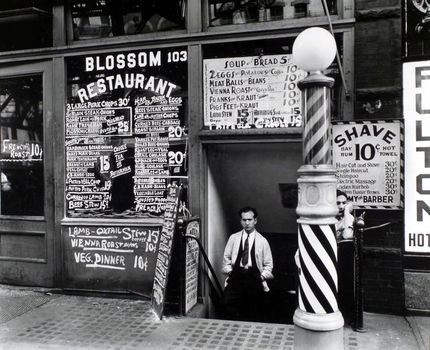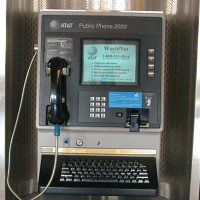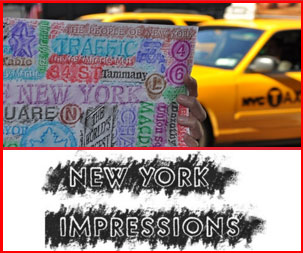The so-called “payphone of the future” has come and gone a number of times since the mid-1990s. AT&T’s Public Phone 2000 could be found at most major airports, along with garishly ugly contraptions such as the Atcom/Info Cyberbooth and TouchNet Internet Business Centers.
Telco companies large and small produced a wide range of these now forgotten thingumabobs which offered pay-as-you-go Internet, telephone and fax services.
Those products targeted business travelers. It was TCC Teleplex’s Internet Kiosk (better known as the “Internet Payphone”) that brought such devices to New York’s streets. The Internet Payphone in New York premiered in 2002, blithely inhabiting our sidewalks in dozens of locations for about 8 years.
In 2010 TCC Teleplex announced it would replace its Internet Payphones with solar-powered “green” models. That never happened, and the under-appreciated innovation of TCC Teleplex’s Internet Payphone disappeared.
Fast forward to 2014 and the payphone of the future is back. On November 17th New York City Mayor Bill de Blasio announced plans to replace the city’s stable of outdoor public telephones with “Links” — multipurpose public kiosks which would offer free Wi-Fi, touchscreen information services, cell phone charging stations, and, surprisingly, the ability to make phone calls.
Payphones would not entirely disappear from New York under this plan, which targets thousands of outdoor payphones lining the city’s sidewalks and curbs. Phones located in subway stations, airports, bus terminals, theaters, and other venues are not in the cross hairs of this potential payphone bloodbath, though market factors could force them out of business anyway. How can pay-as-you-go telephones survive when thousands of devices offering exactly the same service for free abound?
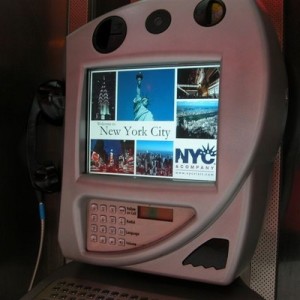
For better or worse I am happy to see that the Payphone Project’s call for payphones to be free phones has inched one step closer to reality.
The LinkNYC plan — which requires approval by New York’s Franchise and Concession Review Committee (FCRC) — is put forward by CityBridge, a consortium of companies headed by Titan, the display advertising company that presently owns a majority of the city’s outdoor payphones.
This plan to essentially erase traditional coin-fed phones from city streets has New York’s payphone community (what’s left of it, that is) asking a lot of questions, chief among them simply “Why choose Titan?” It is a reasonable query given that company’s somewhat checkered past with city and state agencies.
Four years ago the MTA terminated its contract with Titan after the company defaulted on about $20,000,000 it owed the agency. Titan claimed to be blindsided by the MTA’s move.
More recently Titan caused a minor kerfuffle when Bluetooth beacons were revealed to have been placed on its public telephones. The beacons, capable of sending and receiving information from smartphones and other Bluetooth devices, raised hackles from privacy activists claiming the devices’ placement — and the fact that they were installed with no public announcement or input — evidenced some sort of guerrilla advertising-aware surveillance initiative.
The beacons were installed with the approval of the city’s Department of Information Technology & Telecommunications (DoITT). Informed observers recognized the ludicrousness of those privacy concerns, but facts seldom prevent such a story from going viral. The beacons were removed.
Despite its lack of substance the beacon “scandal” — along with the company’s sometimes rocky relationship with the city — made Titan a surprising recipient of such a major telecommunications contract.
==
It would be unfortunate if one characteristic passed on from payphones of today to LinkNYC is that the devices almost never work. Advertising comes first in today’s payphone business. With virtually all of its expected income coming from ad revenues there is little reason to assume the same would not hold true for LinkNYC.
Payphones today commonly remain out of service for months as payphone companies wait for Verizon to restore dial tone to their phones. With that copper landline wiring presumably not in the picture the phone service offered by LinkNYC should be more reliable than today’s public telephones, at least on a day to day basis.
CityBridge implies that its Links would be better taken care of than payphones of today, as hundreds of new jobs would be created for the purpose of servicing them.
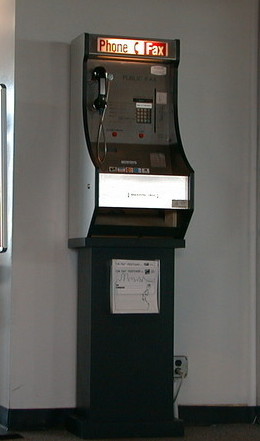
Nevertheless the monopolistic nature of CityBridge’s ownership of these kiosks should concern the FCRC, which will conduct a public hearing about the matter in December. With no legitimate competition and no financial incentive to keep the Links’ “free” features functional it is easy to imagine thousands of these devices languishing in disrepair, save for their ability to display advertisements — just like payphones of today.
CityBridge claims LinkNYC will earn the city half a billion dollars over 12 years, or an average of about $42 million a year. With a goal of installing as many as 10,000 of these kiosks it would take some time to reach that promise, as thousands of these units could not simply rise up overnight.
The possibility of raking in $42 million a year puts LinkNYC’s potential value to New York quite a bit higher than kiosks of today. About $17 million from payphone kiosk advertising revenues enriched city coffers in 2013.
The city might need that extra money to fend off contentious and expensive litigation. Telebeam and other payphone providers warned throughout the RFP process of lawsuits targeting what they describe as a municipally sanctioned monopoly. Telecommunications lawyers, already chomping at the bit in anticipation of litigation, see the lawsuits as inevitable.
LinkNYC, should it be approved, has a lot of promises — maybe too many — to live up to. 12 years seems like a rather lengthy time frame for locking in a contract of this sort considering the program’s unproven value to everyday New Yorkers. And while prototypes of the blandly named Links devices look reasonably modern and sleek today the pace at which technology evolves could, in just a few years, have them looking like those homely payphones of the future from decades ago.



